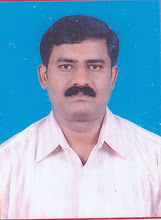
Shirdi is that mystical magical town near the holy city of Nasik, close to Mumbai. This hallowed town exudes such intense devotion, that even the casual visitor is bound to be charged with fervour. Shirdi was the abode of the Saint Sai Baba, who lived here for eighty years - and died here over eighty years ago. It is said that Sai Baba himself calls his devotees to Shirdi and that his blessings can heal even the deepest wound.
The town is tiny - just 2 square km of main street and a labyrinth of by-lanes - but packs in much passion. Pilgrims throng for a brief "darshan" at Samadhi Mandir, the shrine of Sai Baba where his mortal remains were interred. The queues outside the mandir are endless, the throng inside is maddening, and the devotion intense.
The town is tiny - just 2 square km of main street and a labyrinth of by-lanes - but packs in much passion. Pilgrims throng for a brief "darshan" at Samadhi Mandir, the shrine of Sai Baba where his mortal remains were interred. The queues outside the mandir are endless, the throng inside is maddening, and the devotion intense.
Next to the shrine is the peaceful Masjid where Sai Baba spent most of his life. The sacred fire called "dhuni" still burns here and its ash or "udhi" is smeared on devotees.
The Chavadi is a small building where Sai Baba used to spend every alternate night.
The Guru Sthan is the shrine where the Baba’s spiritual leader took samadhi (gave up his body). The neem tree at the Guru Sthan where Sai Baba first sat when he came to Shirdi, is said to have absorbed miracle powers.
The Guru Sthan is the shrine where the Baba’s spiritual leader took samadhi (gave up his body). The neem tree at the Guru Sthan where Sai Baba first sat when he came to Shirdi, is said to have absorbed miracle powers.
The Lendi Gardens where Sai Baba went for a walk and sat in meditation is a spot where devotees come to pray.
The Khandoba Temple, near the STA bus stop, is the oldest temple in Shirdi.
The streets of Shirdi are paved with shops selling Sai Baba memorabilia, especially the unforgettable pictures of Sai Baba himself, with his piercing eyes, snowy beard and benevolent smile. For assistance in Shirdi, contact the Shri Sai Baba Sansthan, a charitable organisation with a rest house, canteen, locker facilities and an assistance counter at the bus stand.
Getting there: Shirdi is on the Ahmednagar-Manmad Highway, 250 km from Mumbai and 75 km from Nashik. You can fly into Nashik and then take a bus, taxi or train to Shirdi. Shirdi is accessible on the Central Railway line; get off at Manmad (65 km from Shirdi) or at Kopergaon (18 km). MTDC runs buses from all major destinations.
The streets of Shirdi are paved with shops selling Sai Baba memorabilia, especially the unforgettable pictures of Sai Baba himself, with his piercing eyes, snowy beard and benevolent smile. For assistance in Shirdi, contact the Shri Sai Baba Sansthan, a charitable organisation with a rest house, canteen, locker facilities and an assistance counter at the bus stand.
Getting there: Shirdi is on the Ahmednagar-Manmad Highway, 250 km from Mumbai and 75 km from Nashik. You can fly into Nashik and then take a bus, taxi or train to Shirdi. Shirdi is accessible on the Central Railway line; get off at Manmad (65 km from Shirdi) or at Kopergaon (18 km). MTDC runs buses from all major destinations.
Best time: Pilgrims flock to Shirdi at any time of the year. Shirdi has a dry climate that swings to extremes, from a high of 40° C in May, to a low of 7° C in January. But the monsoon months - June to August - are pleasant, with scanty rains. Though the shrine is open though the week, Thursday is Sai Baba's special day.
Accommodation: Accommodation is never a problem in Shirdi - from the MTDC hotel, tourist rest houses, dharamsalas and ashrams, to five star accommodation - the town is totally geared for pilgrims. Hotels offer special packages and check-in/check-out timings. You can stay in comfort and clean surroundings at one of the charitable sansthas and dharamsalas for just a handful of rupees. Stay clear of touts!
Money: The shops open as early as 7 a.m. and close late, at around 10:30 p.m. Shirdi does not have any banks or moneychangers and you will need to go to Nashik to change your foreign currency. Most of the large hotels accept international credit cards.













